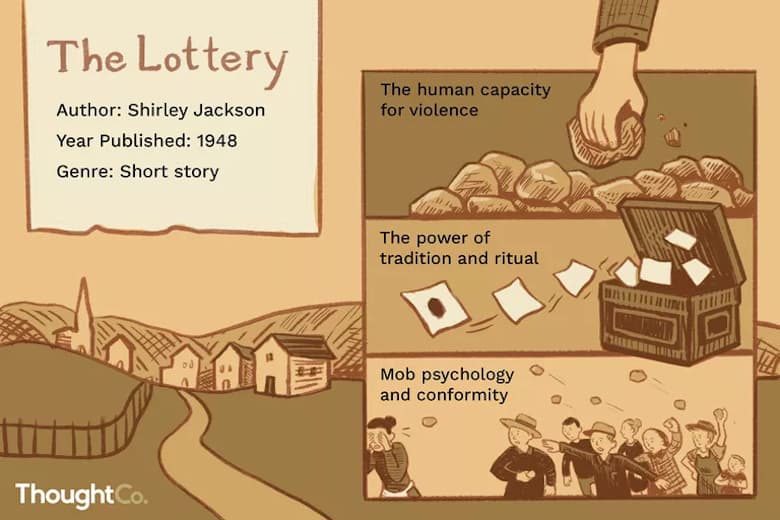My fellow horror fiend Stephanie and I will, on occasion, ask one another – what do you find more terrifying? The natural serial killer or the supernatural demon. Our answers are always the same – the natural serial killer.
With her background in human psychology, and my own in studying Gothic literature, combined with a penchant for horror films in all shapes and sizes; we have both been exposed to most of what the genre has to offer.
Yet, with all the Pazuzu’s and Valak’s you can shake a stick at, we are both more terrified of those films that posit the infamous ‘BASED ON TRUE EVENTS’ at the start of their films.
Shirley Jackson, writing four and a half decades before either of us were born, took this fear of humanity, not of its depraved depths, but of its compulsion for ritual, and wrote “The Lottery,” a short story more terrifying than a casual reader may observe.
Habit and Ritual
I have no idea why there is a tree behind me as I write this. It is a six foot-ish, fake Christmas tree covered in coloured lights that I’ve had for almost ten years now. I hate the tree, and I hate the lights. They’re old. I don’t have decorations that make them Insta-worthy.
All in all, the tree standing behind is up because I’m supposed to put it up at this time of year. I have no idea what it has to do with Jesus, and I know only vaguely of its pagan and/or Egyptian origins.
So? Who cares?
Why have I spent a hundred words detailing something that has laughably little to do with Shirley Jackson’s The Lottery? Because when I discuss the points of its plot later on, I want you to think of things you do out of habit or ritual that you do not particularly enjoy doing, and may have no idea why you do them.
“The Lottery” Synopsis
Shirley Jackson begins “The Lottery” with a gentle immersion into the time, day, and setting of the story, describing both the temperature and visual cues of her setting. As the paragraphs move on, more and more people from the unnamed village begin to gather in the village square.
We get little glimpses into what each demographic of the village is doing while the story slowly boils to its climax. It sounds mundane, but I assure you it’s not; it’s just a difficult short story to describe without ruining key aspects of the plot. Think of The Hunger Games but with a tonne more idle chit chat before Effie appears on stage.
And then… well…
The Climax
“It isn’t fair, it isn’t right,” Mrs Hutchinson screams, and then they were upon her. This is the last line of the story, and chilling to say the least. Mrs Hutchinson goes from one of the flock of villagers nervously awaiting the results of the Lottery, to its annual victim.
Her screams are not only for the friends and community she has been part of for her entire life, but for her husband and children, all of whom eagerly pick up stones to fulfil the Lottery’s legacy – a sacrifice.
It is strange, then, to read the story a second time. The foreshadowing that Jackson sprinkles through the text is astounding, and, seemingly, obvious. Much time is spent in the first few chapters establishing the importance and vitality of the stones collected by the young boys of the community.

And it is here that the scariest part of Shirley Jackson’s “The Lottery” is revealed. The children gleefully collect these stones. They take great time and care in guarding those they have collected and choose ones that will throw easier, akin to how one would select the perfect stone to skim along the surface of a body of water.
— FOUNDATIONS OF HORROR —
Further explore these subgenres & tropes. more>>
#Psychological horror | #Creepy Kids

Each of these children are fully aware of how these stones will be used, and each is cognizant of the fact they may be throwing these stones at a member of their own family, or indeed be the one on the receiving end of these stones.
Catherine Sustana does a much better job of deep diving into this in her analysis available here but I wonder then, as children are more active online, and are part of communities online as well as those in their immediate vicinity, how a retelling of this story would work today? And what the results would be if The Lottery were to emerge as a modern phenomenon?
Stranger things have happened!
Shirley Jackson’s “The Lottery” Text and Additional Reading
“The Lottery” text at cusd200.org
The Lottery Analysis at ukessays.com
Analysis of The Lottery at literariness.org
Last Updated on January 19, 2022.

